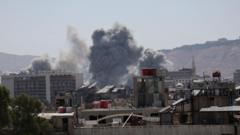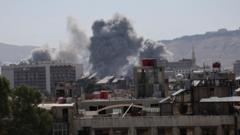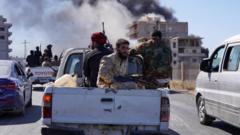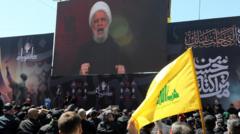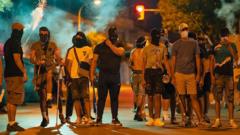A recent attack in Pahalgam shattered the tranquility of a picturesque valley in Indian-administered Kashmir, resulting in the tragic deaths of 26 people, including newlyweds, and leaving 17 others injured. Witnesses recounted horrifying scenes of chaos as militants opened fire on unsuspecting tourists.
Tragedy in Paradise: Kashmir's Scenic Valley Turns to Horror

Tragedy in Paradise: Kashmir's Scenic Valley Turns to Horror
A serene day in Kashmir’s idyllic Baisaran Valley becomes the site of a brutal massacre in which 26 lives were lost.
On April 23, 2025, around 2 PM, the sun-drenched Baisaran Valley was filled with visitors, including Shubham Dwivedi and Aishanya Pandey, who had just begun their married life. They sought the breathtaking views of the region, but their joy was cut short in mere moments. The couple, along with others enjoying the harmless day, became victims as gunfire erupted from militants who targeted a group of sightseers.
This attack marks one of the most tragic assaults on civilians in the region in recent times. It starkly illustrates the ongoing vulnerabilities of Kashmir, an area long disputed between India and Pakistan. Despite efforts by the Indian government to stabilize the region and promote tourism after a period of unrest, the events of this day have highlighted the persistent risks that linger even in times of relative peace.
Eyewitness accounts revealed scenes of desperate panic. Lives were abruptly taken as the wounded cried out for help amid the blood-soaked ground. Heart-wrenching images emerged, depicting a woman frozen in grief beside her deceased husband; she wore the traditional red-and-white bride bangles, signifying her recent marriage just days before the tragedy.
This horrific event serves as a somber reminder of the complex socio-political landscape of Kashmir and the recent history of violence that continues to disrupt the lives of its citizens and visitors alike.
As families mourn and investigations are underway, this massacre not only resonates within the valley but raises critical questions about the future of security and stability in the region that many continue to dream of visiting.
This attack marks one of the most tragic assaults on civilians in the region in recent times. It starkly illustrates the ongoing vulnerabilities of Kashmir, an area long disputed between India and Pakistan. Despite efforts by the Indian government to stabilize the region and promote tourism after a period of unrest, the events of this day have highlighted the persistent risks that linger even in times of relative peace.
Eyewitness accounts revealed scenes of desperate panic. Lives were abruptly taken as the wounded cried out for help amid the blood-soaked ground. Heart-wrenching images emerged, depicting a woman frozen in grief beside her deceased husband; she wore the traditional red-and-white bride bangles, signifying her recent marriage just days before the tragedy.
This horrific event serves as a somber reminder of the complex socio-political landscape of Kashmir and the recent history of violence that continues to disrupt the lives of its citizens and visitors alike.
As families mourn and investigations are underway, this massacre not only resonates within the valley but raises critical questions about the future of security and stability in the region that many continue to dream of visiting.


